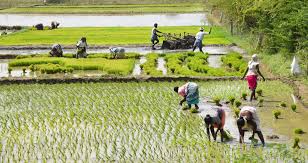Cultivation shift helps Chhattisgarh farmers earn Rs 2,641-cr profit
By R Krishan Das
In a ground-breaking initiative, a district’s strategic shift from summer paddy cultivation to pulses and oilseeds during the Rabi season has not only saved precious water resources but also resulted in a whopping ₹2,641 crore profit for farmers.
Parastarai village in Chhattisgarh’s Dhamtari district, once grappling with severe water shortage, is now a beacon of agricultural transformation.
Elders of the village recalled a time when even after digging wells up to 200 feet, water was scarce, and the rising electricity costs for irrigation were unsustainable.
Despite these challenges, paddy cultivation remained their identity and livelihood — something that no one could imagine giving up.
Over the course of the year, a progressive initiative by the district administration helped shift the mindset of local farmers.
They were encouraged to adopt less water-consuming crops, like pulses and oilseeds, instead of the water-intensive paddy.
As a result, paddy cultivation in the district dropped by a remarkable 6,283 hectares, reducing water usage by an estimated 75,000 million litres in the district.
According to officials, 28,000 farmers from 265 villages attended educational camps, where experts, agricultural officials, and students from agriculture and livelihood colleges emphasised the importance of water conservation.
These camps played a pivotal role in shifting focus towards growing more water-efficient crops like gram, sunflower, mustard, linseed, and sesame.
What began as a small shift in Parastarai village soon gained momentum throughout Dhamtari district.
“Today, farmers in 494 out of the 653 villages have adopted pulses and oilseeds, moving away from paddy cultivation. This change has led to a remarkable profit of ₹2,641 crore, with the additional benefit of improved groundwater levels,” a senior official in the district said.
The shift to less water-intensive crops has significantly reduced electricity consumption, which has further decreased farmers’ costs, making agriculture more sustainable, the official added.
The environmental and economic benefits of the change are also evident, the official said.
This article has been republished from The Business Standard.

